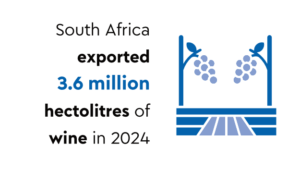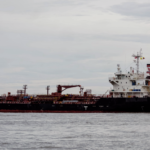In the same way that any country in the world establishes its own environmental and social legislative requirements, so too have the nations in Africa.
To a large extent, individual mining projects are also influenced by the internal governance requirements that mining houses voluntarily impose on themselves.
‘Each country is sovereign in developing its own legislation and [so] no country is required to adhere to any international standards,’ says Briony Liber, associate partner and principal environmental consultant at SRK Consulting.
‘However, the environmental legislation in many African countries has been influenced by international practice and, in many instances, has been guided and developed with funding from the World Bank and other international funding agencies.’
Most countries that SRK has worked in have relatively competent environmental legislation, she says, adding that the processes for environmental permitting are much the same in many nations across the continent.
‘They have similar requirements for stakeholder engagement, specialist studies, baseline data collection, disclosure of project information and methods for assessing and rating the significance of impacts and development of management commitments.’
Liber does point out, however, that mining developers often choose to interpret legislation in a manner that falls short of the spirit or intent thereof, resulting in a narrow, minimum-compliance focus. Also, as a result of limited resources, regulators often lack the capacity to enforce compliance with legislation.
‘Additionally, in many instances, while published emissions and effluent standards are competent, they tend to be applied prescriptively without consideration of the nature, scale and context of mining operations or risk, sometimes making management and mitigation overly onerous,’ says Liber.
While each country is diverse in its requirements and levels of enforcement, there are many similarities in the environmental application and licence-granting processes.
‘Typically the environmental authorisation process in most African countries requires that an environmental assessment practitioner is appointed by the mining developer to undertake an environmental impact assessment,’ she says.
‘The approval of the EIA [environmental impact assessment] by the authorities is a prerequisite for authorisation of any mine.’
Environmental authorisation regulations are usually located either within the framework of legislation or within the mining laws. In addition to the mining authorisation process, most countries also have mining legislation that stipulates requirements when applying for approval.
Government legislation is not the only method by which mines are regulated. Many firms have their own internal governance requirements
This may include the submission of a mineworks programme, labour and training plans, a community or sustainable development plan, and financial provisions for rehabilitation and mine closure.
Of course, it’s not the legislation itself but rather the application thereof that determines the environmental impact of mines within a state’s borders.
‘Countries that have had extensive mining experience tend to be better capacitated in that generally the skills are available within those countries, and the legislative frameworks have been tested,’ says Liber.
‘However, lack of adequate resources tends to undermine this, in our experience, resulting in the challenge of good legislative frameworks that are made less effective through inconsistent application and enforcement.’
For example, Cameroon and the Republic of Congo have very limited mining experience. While the laws exists in these states, it has not been sufficiently tested.
Mali is a country with extensive experience in gold mining, considerably more so than in uranium. Consequently, it has relatively less capacity to deal with proposed uranium mining operations in that country. What’s more, a military coup in early 2012 put a halt to government upgrades of capacity to govern new uranium projects.
South Africa, with its long mining history is one of the better-placed countries on the continent in terms of regulating the environmental impact of mining.
According to SRK associate partner and principal environmental scientist James Lake: ‘South Africa has a broad spectrum of environmental legislation that pertains to mining, with companies required to obtain permits or licences against three main acts regulated by three different authorities.’
The main acts are the Minerals and Petroleum Resources Development Act, National Water Act and National Environmental Management Act. Depending on the project context, there are instances where operations are also required to adhere to the National Environmental Management Acts (waste, air quality and biodiversity), National Resources Act and National Forests Act. This is in addition to mine health and safety, labour and other legislation.
The recent promulgation of revised EIA regulations under NEMA, which took effect in December 2014, introduced the One Environmental System, which is intended to streamline environmental decision-making, especially with regard to mining applications.
In the course of 2015, further amendments pertaining to the financial provision for the rehabilitation, closure and post-closure of prospecting, exploration, mining and production operations are expected. ‘Despite the evolving legislation, the authorisation process and the subsequent reporting that operations are legally required to adhere to have introduced a generally robust approach to the industry, with most operations striving to maintain compliance at the least,’ says Lake.
He acknowledges that there are issues of personnel capacity and resources in authority in South Africa, but adds that the element of internal governance (imposed by the regulations) assists the lawmakers when capacity and resource issues arise. ‘Furthermore, the authorities have implemented a generally effective compliance monitoring division, where operations impacts on the environment and water resources are audited by the Green and Blue Scorpions [environmental law enforcement] respectively,’ he says.
Government legislation is not the only method by which mines are regulated. Many mining firms have their own internal governance requirements, making them voluntary signatories to a set of international good-practice guidelines. These include the International Council on Mining and Metallurgy’s 10 principles for sustainable development, the Extractive Industries Transparency Initiative, the Voluntary Principles on Security and Human Rights, the Business and Biodiversity Offsets Programme and numerous others. Furthermore, they often exceed the legislative requirements in most African states.
Liber points out that mining firms seeking lender funding from banking institutions that adhere to the Equator Principles must comply with the associated risk-management framework. This is in addition to the International Finance Corporation’s Performance Standards and the World Bank Environmental Health and Safety Guidelines.
Firms have realised that, to profit from a country’s human and mineral resources, it is essential that they give something back
‘The major mining companies generally, in our experience, have internal governance and policies that align with international good practice and go beyond mere compliance into the risk-management realm, as do some mid-tier companies,’ says Lake.
‘However, in many instances, mining companies – junior miners especially – that are cash-strapped tend to take a compliance focus rather than a broader risk-management perspective, and this is where the application of legislation may be mechanistic.’
Leading the way in the integration of environmental principles into the business is Letšeng Diamonds in Lesotho. Lake says that a differentiator at this operation is the environmental systems that have been developed – they are robust and not merely a checkbox system to support certification.
Identified risks are elevated to the operations executive, who then supports further investigation to quantify exactly what it represents. If the risk is deemed unacceptable, significant effort is invested in understanding how it can be mitigated, resulting in the necessary measures being implemented.
Another leader is Swiss-based Pala Investments, which operates Sierra Rutile – a Sierra Leone mineral sands company that is highly conscious of sustainability, reputation and the associated risks. Pala has taken the decision to move beyond local compliance, both to build lasting relationships with local communities and to prove to the government that it is a serious player in the nation’s development.
‘This forward-thinking approach has also proved wise in the context of industry unrest in that country,’ says Lake.
‘While labour unrest has heavily impacted on other mines in the region, Sierra Rutile has been able to build on solid relationships with the community in the area, which date back to the mine’s establishment in the 1970s.
‘Underpinning this co-operation is the community’s realisation that the mine is a vehicle for other benefits and, as such, is an important part of their economic development,’ she says.
More and more, mining companies are complying with (some even exceeding) legislative requirements, both at the set-up stage of a mine and throughout its lifespan. Liber attributes this to pressure placed on shareholders in terms of managing reputational risk.
It appears these firms have realised that, to profit from a country’s human and mineral resources, it is essential that they give something back.
By Georgina Guedes
Image: Gallo/GettyImages
















